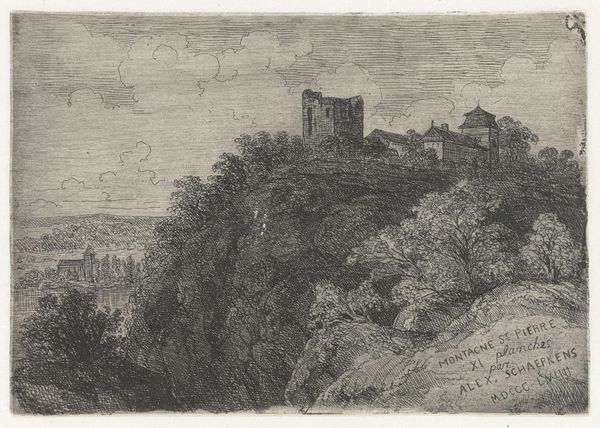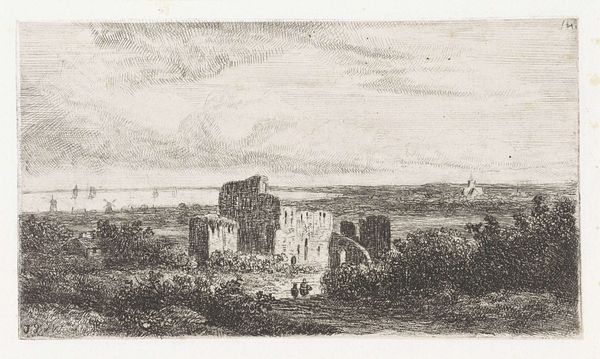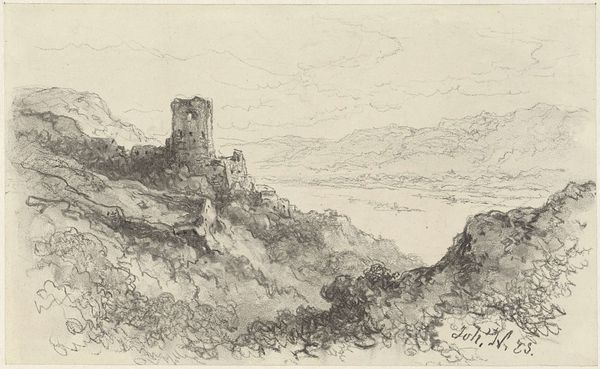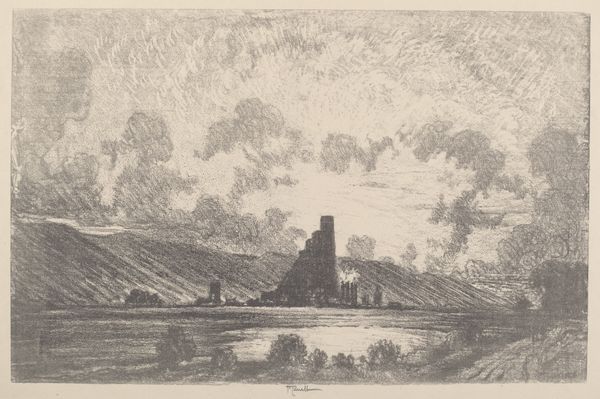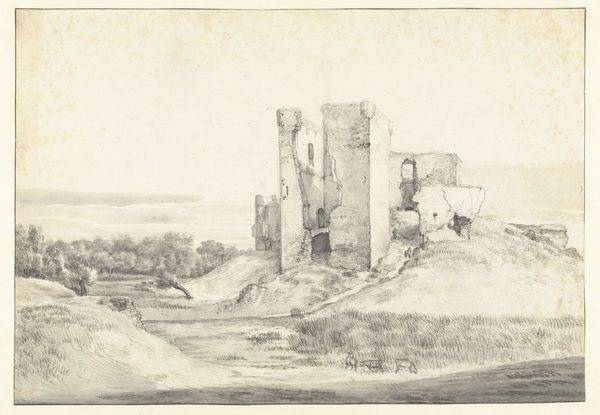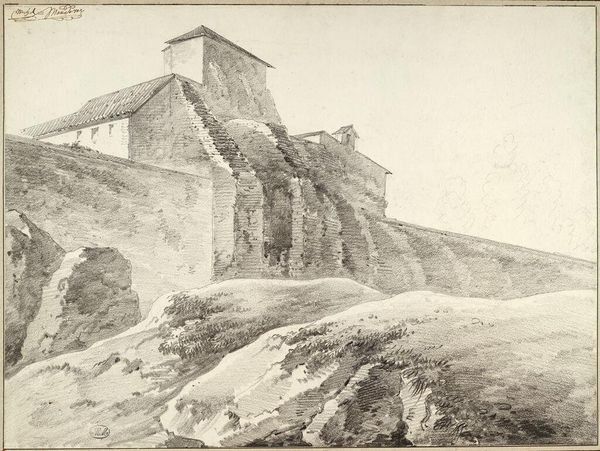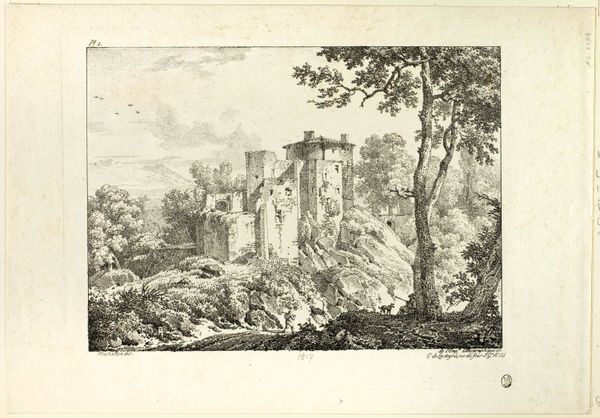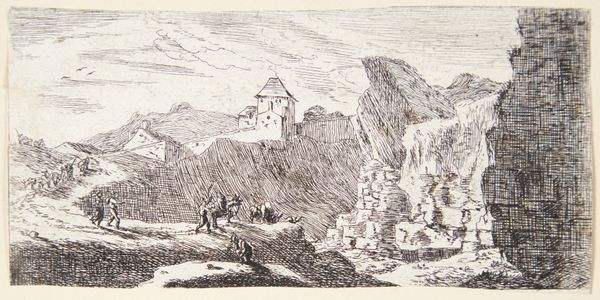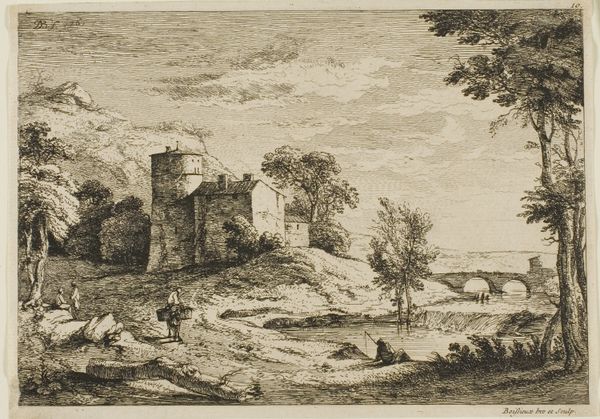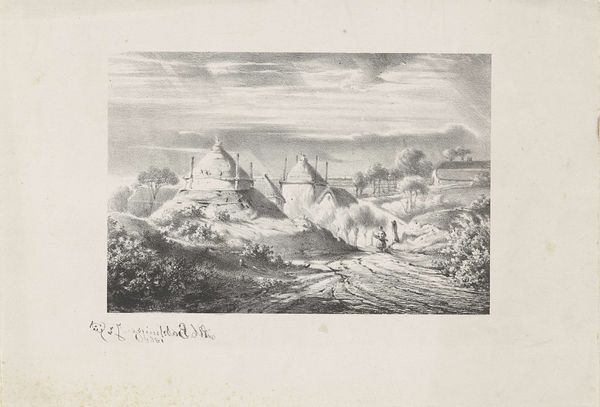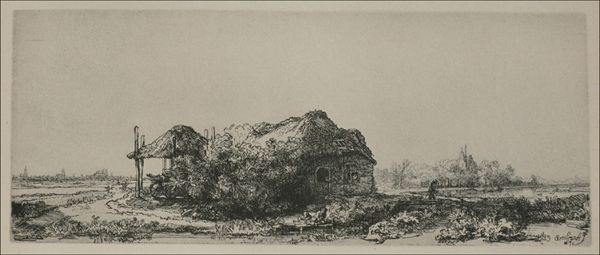
drawing, print, etching, ink, engraving
#
pencil drawn
#
drawing
# print
#
etching
#
pencil sketch
#
old engraving style
#
landscape
#
ink
#
pen-ink sketch
#
pen work
#
mixed medium
#
engraving
Copyright: Public domain
Giuseppe Barberis made La Cortina sometime between 1840 and 1917 with what looks like pen and ink, but could also be a print. The obsessive mark-making feels like a process of layering and accumulation, a kind of meditation through meticulous detail. Looking at the surface, it’s a dense network of tiny lines, building up volume and shadow, really giving you the impression of the craggy textures of stone. It's such a physically demanding process - and I love how the rigidity of the lines contrasts with the organic forms of the landscape. Notice the way Barberis uses these fine lines to define the architectural details of the buildings, versus the wildness of the vegetation. It reminds me a bit of Piranesi’s etchings, with that same sense of grand scale and intricate detail. But where Piranesi often uses dramatic light and shadow for theatrical effect, Barberis has a more even, almost documentary approach. Both artists seem to understand that art is an ongoing conversation, where we borrow, steal, and riff off each other's ideas across time.
Comments
No comments
Be the first to comment and join the conversation on the ultimate creative platform.
